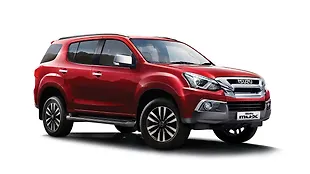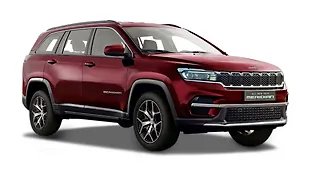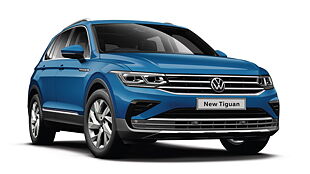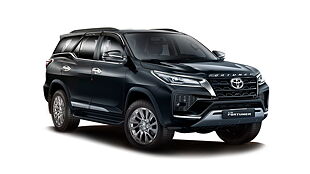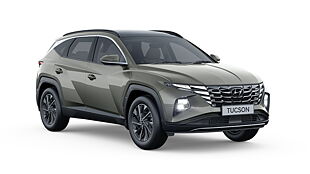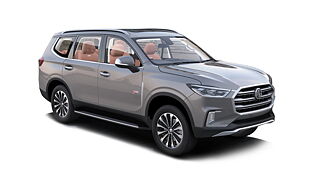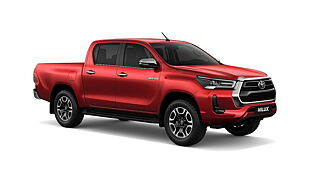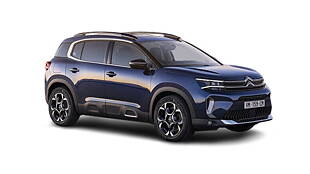Skoda Kodiaq [2017-2020] Scout
- Kodiaq [2017-2020]
- Specs & Features
- Variants
- Colours
- User Reviews
Variant
Skoda Kodiaq [2017-2020] Scout Review
I was told that the Skoda Kodiaq Scout is the off-road focussed variant of the SUV. And with this claim, the car comes with an additional body cladding, new alloys, an all-black cabin and more interestingly, a dedicated 'Off-Road' mode for those who love to venture into the wild. Skoda has also increased the ground clearance of this Kodiaq Scout by 6mm, bringing it up to 194mm. But, is all this sufficient enough to make the Kodiaq more capable? We find out.
What is it?
How is it on the inside?
How does it drive?
Should I buy one?
Where does it fit in?
Specifications & Features
- Specifications
- Features
- Specifications
- Features
Specifications
Engine & Transmission
Engine1968 cc, 4 Cylinders Inline, 4 Valves/Cylinder, DOHCEngine Typeturbocharged diesel engine with common rail systemFuel TypeDieselMax Power (bhp@rpm)148 bhp @ 3500 rpmMax Torque (Nm@rpm)340 Nm @ 1750 rpmMileage (ARAI)16.25 kmplDrivetrain4WD / AWDTransmissionAutomatic - 7 Gears, Manual Override & Paddle ShiftEmission StandardBS 4Turbocharger / SuperchargerTurbochargedOthersIdle Start/StopValve/Cylinder (Configuration)4, DOHCDimensions & Weight
Length4705 mmWidth1882 mmHeight1665 mmWheelbase2791 mmGround Clearance188 mmKerb Weight1820 kgCapacity
Suspensions, Brakes, Steering & Tyres
Features
Exterior
Braking & Traction
Safety
Comfort & Convenience
Lighting
Locks & Security
Doors, Windows, Mirrors & Wipers
Entertainment, Information & Communication
Mobile App Features
Storage
Seats & Upholstery
Instrumentation
Manufacturer Warranty
Other Kodiaq [2017-2020] Variants
| Variants | Price | Specifications | |
|---|---|---|---|
Rs. 33.99 Lakh | 7 Person, 4WD / AWD, 340 Nm, 188 mm, 1820 kg, 270 litres, 7 Gears, turbocharged diesel engine with common rail system, Panoramic, 63 litres, No, No, Front & Rear, 4705 mm, 1882 mm, 1665 mm, 2791 mm, 340 Nm @ 1750 rpm, 148 bhp @ 3500 rpm, Remote with Boot Opener, Yes (Automatic Three Zone), Front & Rear, 1, Reverse Camera with Guidance, Yes, Yes, 1, Yes, Yes, Torque-On-Demand, 9 Airbags (Driver, Passenger, 2 Curtain, Driver Knee, Driver Side, Front Passenger Side, 2 Rear Passenger Side), Yes, 1, BS 4, 5 Doors, 16.25 kmpl, Diesel, Automatic, 148 bhp | Get Offers from Dealers |
Similar Cars
Explore Used Skoda Kodiaq
Colors
Reviews
- (1 Ratings) 1 Reviews
4.0/5
- Looking GorgeousActually I looked this car just now on road it's simply superb looking I think first it's a BMW but it's a skoda kodiaq scout.It looks so luxurious when you are sawing lively on road.Rating parameters(out of 5)4
Exterior
5Comfort
4Performance
4Fuel Economy
4Value For Money
About the ReviewerPurchase Not PurchasedDriven forHaven't driven itWas this review helpful?00


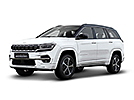

![Skoda Kodiaq [2017-2020] Scout Skoda Kodiaq [2017-2020] Scout](https://imgd.aeplcdn.com/664x374/cw/ec/24294/Skoda-Kodiaq-Right-Front-Three-Quarter-108846.jpg?wm=0&q=80)
![Skoda Kodiaq [2017-2020] Right Rear Three Quarter Skoda Kodiaq [2017-2020] Right Rear Three Quarter](https://imgd.aeplcdn.com/664x374/cw/ec/24294/Skoda-Kodiaq-Right-Rear-Three-Quarter-140395.jpg?wm=0&q=80)
![Skoda Kodiaq [2017-2020] Dashboard Skoda Kodiaq [2017-2020] Dashboard](https://imgd.aeplcdn.com/664x374/cw/ec/24294/Skoda-Kodiaq-Dashboard-140396.jpg?wm=0&q=80)
![Skoda Kodiaq [2017-2020] Exterior Skoda Kodiaq [2017-2020] Exterior](https://imgd.aeplcdn.com/664x374/cw/ec/24294/Skoda-Kodiaq-Exterior-108698.jpg?v=201711021421&q=80)

![Skoda Kodiaq [2017-2020] Exterior Skoda Kodiaq [2017-2020] Exterior](https://imgd.aeplcdn.com/664x374/cw/ec/24294/Skoda-Kodiaq-Exterior-140394.jpg?wm=0&q=80)
![Skoda Kodiaq [2017-2020] Exterior Skoda Kodiaq [2017-2020] Exterior](https://imgd.aeplcdn.com/664x374/cw/ec/24294/Skoda-Kodiaq-Dashboard-140397.jpg?wm=0&q=80)
![Skoda Kodiaq [2017-2020] Interior Skoda Kodiaq [2017-2020] Interior](https://imgd.aeplcdn.com/664x374/n/cw/ec/24294/skoda-kodiaq-interior7.jpg?q=80)

